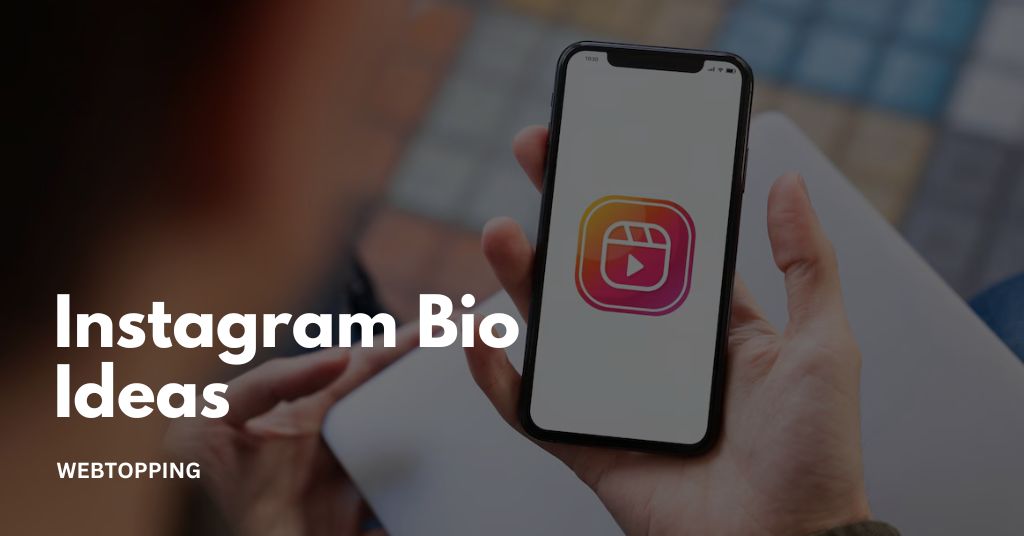
The world of social media has changed rapidly, and so has how influencers earn money. In 2025, influencer income comes from a mix of creative, digital, and brand-driven strategies. While sponsorships and paid partnerships remain key, influencers now leverage multiple revenue streams such as affiliate marketing, digital products, subscriptions, live shopping, and even NFTs or virtual experiences. Understanding how influencers make money means looking at both reach and engagement brands pay for trust and influence, not just follower count.
What is Influencer Monetization?
Influencer monetization is the process of turning social media influencer salary. It is a broad term that covers multiple ways influencers can earn money, from sponsored posts to selling products, affiliate marketing, and platform-based programs.
Influencers essentially act as small businesses. Their brand, credibility, and audience engagement are their products. The more influence they have, the higher their earning potential. Monetization is not just about follower count; engagement, niche, and content quality play critical roles.
11 Top Ways Influencers Make Money in 2025
In 2025, influencers are finding more ways to earn than ever before. Many people search how to make money as an influencer, and the answer involves multiple income streams, creativity, and strategic planning. Below are the top 11 ways influencers are monetizing their presence this year.
1. Sponsored Content & Brand Partnerships:
Influencers earn money by working with brands to showcase products or services through posts, stories, or videos. Payments usually depend on how many followers they have, how engaged their audience is, and the niche they focus on.
This type of collaboration benefits both sides, brands reach the right audience, and influencers get paid for their creativity. Long-term partnerships often bring higher income and better negotiation opportunities.
2. Affiliate Marketing:
Affiliate marketing is a smart way to earn money without depending on one-off deals. Influencers share referral links or discount codes, and every time someone buys through their link, they earn a commission.
Platforms like Amazon, Shopify, and TikTok Shop make this easy to track. A beauty influencer, for instance, could earn 5–20% on every skincare product sold through their link. This not only creates a steady income stream but also answers how do influencers get paid in a passive way.
3. Subscription Platforms:
Subscription platforms like Patreon or Substack allow influencers to offer exclusive content for a monthly fee. This could include behind the scenes videos, private live streams, or downloadable resources.
A fitness influencer might charge $10/month for personalized workout plans. In 2025, subscriptions are a reliable recurring income, unlike one-off sponsorships. It also deepens the creator-fan relationship because fans pay for content they value highly.
4. Ad Revenue from Platforms:
Platforms share ad revenue with creators. YouTube ads are well-known, but TikTok, Instagram, and Meta now offer monetization programs like Reels Play Bonus or Instagram Ads Revenue Sharing.
Influencers earn based on views, engagement, and audience demographics. For example, a travel vlogger could earn thousands monthly if their videos get millions of views. In 2025, short-form video content dominates, meaning even micro-influencers can earn significant ad revenue if content goes viral.
5. User-Generated Content (UGC) Creation:
Brands hire influencers to create content they can use for ads or social media. Influencers produce high-quality photos, videos, or graphics without directly managing the brand’s account.
This monetization leverages content creation skills and creativity. UGC is in high demand because it resonates more authentically with audiences. Influencers benefit by earning income from their work while maintaining independence and promoting their personal brand.
6. Paid ads:
Paid ads are one of the main ways influencers earn money. Brands pay influencers to share posts, videos, or stories, often including a call-to-action link. These payments can be a fixed fee or based on performance, like clicks, leads, or sales.
If you want to become a paid influencer, understanding how paid ads work is key. They let you connect with your audience in an authentic way while helping brands reach the right people. In 2025, influencer-driven ads are more effective than ever because they feel genuine, target specific audiences, and often bring higher earnings than traditional sponsorships.
7. Hosting Events & Workshops:
Influencers host paid events, webinars, or workshops based on their expertise. This can include fitness classes, business coaching, or creative workshops. Attendees pay for knowledge and guidance, while influencers establish authority and credibility.
Events also foster personal interaction, networking, and stronger community engagement. This income stream allows creators to monetize skills beyond digital content, offering a premium experience that provides both financial and professional benefits.
8. YouTube Ad Revenue / Monetization:
Influencers who create videos can make money through ads on platforms like YouTube, TikTok, and Instagram Reels. Earnings depend on views, watch time, and engagement the more people watch and interact, the more creators earn.
Monetization includes pre-roll and mid-roll ads, as well as platform-specific bonuses. In 2025, video content remains a reliable way for creators to generate steady income while growing their audience.
9. Photo and Video Sales:
Influencers can earn money by selling their photos and videos to brands, media outlets, or stock platforms. These visuals are used in ads, marketing campaigns, and social media posts, giving businesses high-quality content without extra effort.
Selling content not only creates a steady passive income but also highlights the influencer’s creativity, builds credibility, attracts new clients, and turns existing work into a long-term revenue source.
10. Public Appearances:
As an influencer grows their following, recognition increases, similar to traditional celebrities. This visibility gives the power to make events highly desirable for audiences.
Collaborating with brand partners to plan or host online or in-person events creates additional income opportunities. Influencers can negotiate payment for their participation, especially if they can attract a large crowd. Public appearances also enhance personal branding, build stronger connections with fans, and expand professional opportunities.
11. Podcasting:
Podcasting is like sitting down and having a friendly conversation with people who care about what you have to say. Through audio episodes, you can share stories, ideas, or even little life lessons that listeners can enjoy anytime while commuting, working, or just relaxing at home. All you need is a microphone and some passion. It’s a simple way to connect, entertain, and inspire people around the world.
What is the Average Salary of an Influencer
The average salary of an influencer can vary widely depending on factors like platform, audience size, engagement rate, niche, and region. Unlike traditional jobs, influencers earn through multiple income streams such as brand deals, sponsored posts, affiliate marketing, product launches, YouTube ad revenue, or TikTok/Instagram creator funds. Let me break it down clearly:
Influencer Tiers and Typical Earnings:
Influencers are often categorized into different tiers based on their follower count. Each tier has a different earning potential:
1. Nano-influencers (1,000–10,000 followers):
Nano-influencers usually have smaller but highly engaged audiences. They can earn $50 to $500 per sponsored post depending on engagement and niche. Despite their smaller audience, brands prefer them for authentic promotion.
2. Micro-influencers (10,000–100,000 followers):
Micro-influencers have a larger reach and can charge $500 to $2,500 per post. They often work with brands on long-term partnerships because their audiences are specific and loyal.
3. Mid-tier influencers (100,000–500,000 followers):
These influencers typically earn $2,500 to $10,000 per post. They are well-known in their niche and attract bigger brands willing to pay more for visibility.
4. Macro-influencers (500,000–1,000,000 followers):
Macro-influencers can earn $10,000 to $20,000 per post. Their audience is much broader, and they often have multiple revenue streams including brand sponsorships, product launches, and collaborations.
5. Mega-influencers or Celebrities (1M+ followers):
Mega-influencers or celebrity influencers can earn $20,000 to $100,000 or more per post. They often collaborate with global brands and sometimes launch their own product lines.
Platform-Based Earnings:
Different social media platforms provide different earning opportunities. Let’s break it down:
1. Instagram:
Instagram is one of the most widely used platforms for influencers, especially in niches like fashion, beauty, travel, lifestyle, and fitness. If you are curious about how do Instagram influencers make money, the main source of income is sponsored content, where brands pay influencers to create posts, reels, or stories featuring their products or services.
Earnings by Follower Count:
- Micro-influencers (10k–50k followers): $50–$500 per post.
- Mid-tier influencers (50k–500k followers): $500–$5,000 per post.
- Macro-influencers (500k–1M followers): $5,000–$10,000 per post.
- Mega-influencers (1M+ followers): $10,000–$50,000+ per post.
Other monetization options:
- Reels Bonuses: Instagram occasionally rewards creators for high-performing reels, though these payouts are smaller than brand deals.
- Affiliate Marketing: Influencers can earn commissions by sharing product links in posts or stories.
- Instagram Shopping: Eligible influencers can sell their own products directly through the platform.
Key Insight: Engagement (likes, comments, shares) is more valuable than follower count alone. A smaller account with high engagement can earn more than a larger account with low interaction.
2. YouTube:
YouTube is a video-first platform where creators can earn money in multiple ways. The platform favors creators who produce consistent, engaging, and high-quality content, and earnings depend on audience size, engagement, video length, and niche.
Ad Revenue: Through the YouTube Partner Program, creators earn money from ads displayed on their videos.
- Average payout: $1–$5 per 1,000 views.
Factors influencing earnings:
- Audience location: Views from countries with higher ad rates (like the U.S., U.K., Canada) earn more.
- Watch time: Longer videos keep viewers watching and allow more ads to be shown.
- Video length: Videos over 8 minutes can include multiple mid-roll ads.
Example: A 500,000-view video can earn $500–$2,500 in ad revenue alone.
Sponsored Videos: Brands pay creators to make content featuring their products or services.
- Small channels: $100–$500 per video.
- Mid-tier channels: $1,000–$10,000 per video.
- Top channels: Tens of thousands per video.
Sponsored videos are often more reliable than ad revenue and can provide consistent income.
3. TikTok:
TikTok is a short-video platform that emphasizes trends, creativity, and virality. Its monetization methods are different from long-form platforms like YouTube.
TikTok Creator Fund
- Payment: $0.02–$0.04 per 1,000 views.
- The fund is spread across millions of creators, so it’s supplemental income, not a full earning source.
Brand Partnerships and Sponsored Content
- TikTok influencers are often paid by brands to create short videos featuring products.
- Payment depends on:
- Follower count.
- Engagement rate (likes, shares, comments).
- Creativity and trend alignment.
- Earnings range:
- Micro-influencers (10k–50k followers): $50–$500 per video.
- Mid-tier influencers (50k–500k followers): $500–$5,000 per video.
- Large influencers (500k–1M+ followers): $5,000–$50,000+ per video.
Affiliate Marketing and In-App Sales
- Some creators earn commissions by selling products via affiliate links or TikTok shopping.
- This creates passive income, as videos continue to generate sales after posting.
- Feature availability depends on the region and platform tools.
4. Twitch and Other Streaming Platforms:
Streaming platforms like Twitch, YouTube Live, and Facebook Gaming allow influencers to monetize real-time interaction with viewers. Revenue here relies heavily on loyalty and engagement, rather than occasional viral content.
Revenue Sources:
- Subscriptions: Fans pay a monthly fee ($4.99, $9.99, $24.99) for perks like special emojis, badges, or access to private content. Influencers get a share of the subscription revenue.
- Donations and Bits: Viewers can tip creators directly during live streams. High engagement often translates to higher tips.
- Sponsorships: Brands pay to be featured in streams. Common niches include gaming, tech, and lifestyle. Sponsorship deals can be short-term campaigns or long-term partnerships.
- Ad Revenue: Ads played during streams generate extra income, but earnings are generally smaller compared to subscriptions and sponsorships.
Key Insight:
- Streaming rewards consistency, community, and audience loyalty.
- Creators who maintain regular streaming schedules and interact with their audience tend to earn more stable, predictable income than those who rely on sporadic viral content.
Frequently Asked Questions
Social media influencers earn via brand sponsorships, ads on platforms like YouTube or TikTok, affiliate marketing, and paid collaborations. They may also monetize live streams, fan subscriptions, or exclusive content.
Brand payments vary widely depending on the influencer’s follower count, engagement rate, niche, and content quality. Micro-influencers may earn $50–$500 per post, while top influencers can earn thousands or even millions per collaboration.
Influencers are typically paid through:
Bank transfers or direct deposits – most common for brand collaborations.
PayPal or other online payment platforms – useful for international payments.
Checks – less common, usually for large brands or agencies.
Gift cards or products – sometimes influencers are compensated with merchandise instead of cash.
Instagram influencer earnings depend on follower count, engagement rate, niche, and content quality:
Nano influencers (1K–10K followers): $10–$100 per post.
Micro influencers (10K–50K followers): $100–$500 per post.
Macro influencers (50K–500K followers): $500–$5,000 per post.
Mega influencers (500K+ followers): $5,000–$100,000+ per post.
Payment depends on the type of collaboration:
Flat fee per post – a fixed amount agreed upon with a brand.
Performance-based payment – earning based on clicks, conversions, or sales generated.
Revenue share or affiliate marketing – influencers get a percentage of sales made through their referral links.
Long-term partnerships – recurring payments for ongoing brand campaigns.





